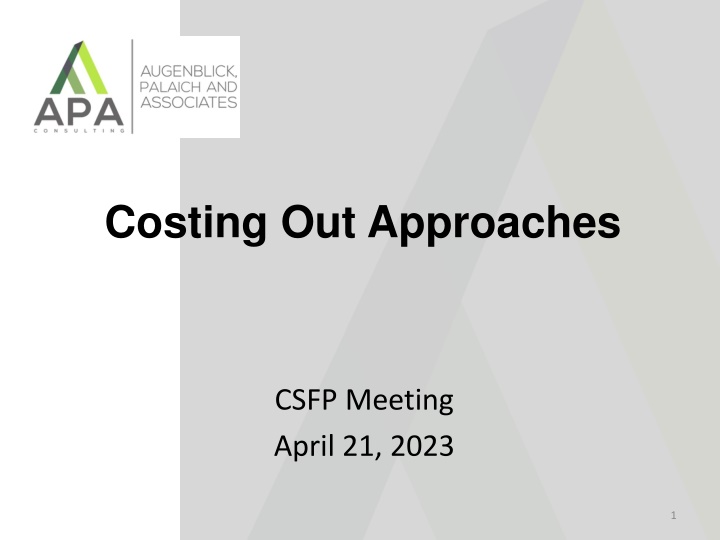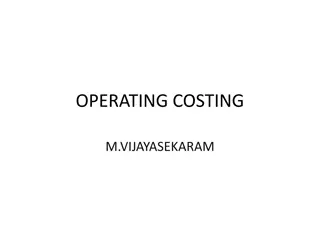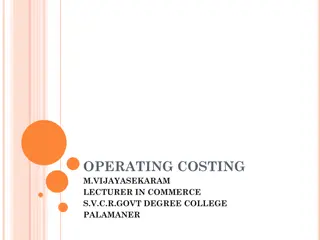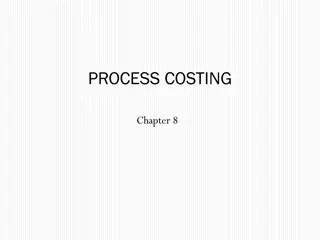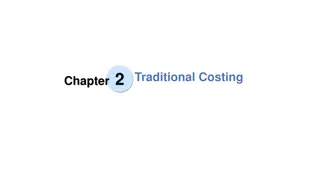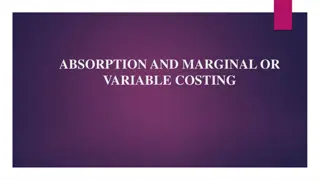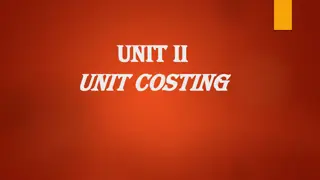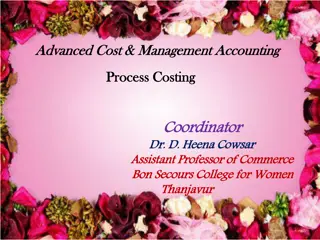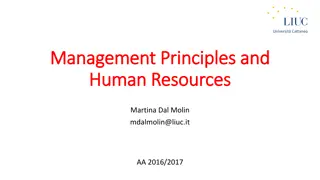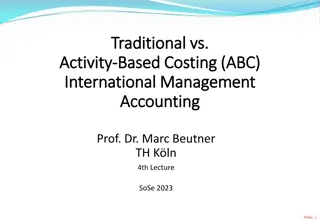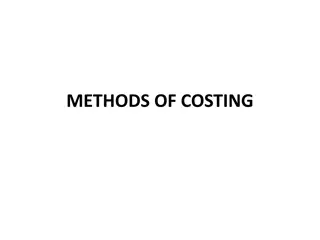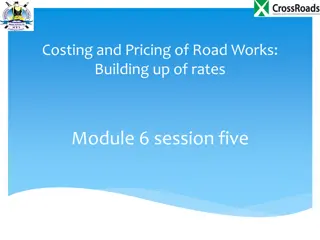Costing Out Approaches
Costing out approaches and studies have been developed to ensure schools and districts have adequate resources to meet state education standards. Implementing these approaches involves professional judgment, evidence-based benchmarks, and data requirements. Using multiple approaches allows for triangulation of results and a more comprehensive examination of expenditures and resource models.
Download Presentation

Please find below an Image/Link to download the presentation.
The content on the website is provided AS IS for your information and personal use only. It may not be sold, licensed, or shared on other websites without obtaining consent from the author.If you encounter any issues during the download, it is possible that the publisher has removed the file from their server.
You are allowed to download the files provided on this website for personal or commercial use, subject to the condition that they are used lawfully. All files are the property of their respective owners.
The content on the website is provided AS IS for your information and personal use only. It may not be sold, licensed, or shared on other websites without obtaining consent from the author.
E N D
Presentation Transcript
Costing Out Approaches CSFP Meeting April 21, 2023 1
Costing Out Studies Costing out or Adequacy Studies developed over the past several decades to examine the resources necessary for districts, schools, and students to meet state education standards Need for studies driven by high-stakes standards/assessment movement if students, teachers and schools are expected to meet certain performance criteria, then state has obligation to provide adequate resources to do the job 2
Implementing Costing Out Approaches Professional Judgment (PJ) Ensuring students can meet all state standards Successful School District (SSD) Currently outperforming other school districts Education Cost Function (ECF) Current performance; extrapolates to meeting all standards Evidence-Based (EB) Benchmark of Success Ensuring students can meet all state standards Data Requirements Expertise of educators serving on PJ panels; uses research as a starting point, but defers to educators when conflict arises in resource recommendations based on their understanding of state standards Expenditure data from selected successful schools or districts Performance, student and district characteristics and expenditure data Best-practice research, reviewed by educators; when conflict arises in resource recommendations, the EB approach defers to the research Resulting Information Yes Base Yes Yes Yes Student Adjustments (Weights) Yes No Yes Yes Resource Model Yes Yes (case studies) No Yes 3
Using Multiple Approaches Allows for triangulation of results Allows multiple performance benchmarks to be considered Current versus future expectations Approaches are strengthened by incorporating components of others Using ECF to identify schools for SSD case studies Using evidence-based information as starting point for PJ panels SSD case studies provide resource model information not gathered by ECF ECF provides deep analysis of existing data not examined through other approaches PJ allows for educator voice and buy-in Allows for detailed examination of both expenditures and resource models 4
Professional Judgment Approach The PJ approach relies on experience and expertise of educators in the state to identify the resources needed to ensure all districts, schools, and students can meet state standards and requirements. Resources identified include school-level personnel, non-personnel costs, additional supports and services, technology, and district-level resources. The PJ approach identifies: a resource model, and a base cost and adjustments for special needs students. 5
Professional Judgment Approach Advantages to using the PJ approach: Highly responsive to evolving state standards and allows for the greatest alignment between a state s performance standards for all students and the estimate of the resources needed Captures the intricacies of the state s context by relying on the expertise and experience of educators Allows for differentiation in resources by concentrations and levels of student need, as well as differences in district characteristics The PJ approach can provide specific high performance instructional models 6
Evidence Based Approach The EB approach begins by examining the academic and best practice research on resources that impact student and school performance. Prototype schools and a district are created and then reviewed by state level educators. Resources identified include school-level personnel, non-personnel costs, additional supports and services, technology, and district-level resources. The EB approach identifies: a resource model, and a base cost and adjustments for special needs students. 7
Evidence Based Approach Advantages to using the EB approach: Based on current research in K-12 education and can be refined to address specific state requirements and context. As is the case with the PJ approach, the EB approach can provide specific high performance instructional models Builds on work of EB implementation in states over the past few decades Relatively easily to update, as built of a national best practices model 8
Education Cost Function Approach The Education Cost Function (ECF) approach determines the link between education costs and desired outcomes by examining available expenditure and performance data collected by the state. Advantages of the ECF: Estimates based on what districts and schools actually do. ECF analyses can provide a strong empirical foundation for estimates of cost differentials. 9
Education Cost Function Approach Considerations with the ECF: Output-Based approaches require high quality measures of current performance and expenditures. By design, statistical models describe relationships within the experience of the data. Extrapolating to performance standards outside current experience is a challenge. Statistical models involve errors of estimation and modeling that need to be counter-balanced with other methods. 10
Successful School Districts Approach The theory behind the Successful School Districts approach is that the resources (expenditures and resource models through case studies) utilized by school outperforming other schools can be analyzed to understand what it takes to be successful. There are four steps to implementing the SSD study: Identifying successful districts Will work with the Committees and staff to set success standards. Examining district expenditures by category Applying efficiency screens Calculating a base cost by category 11
Questions? 12
